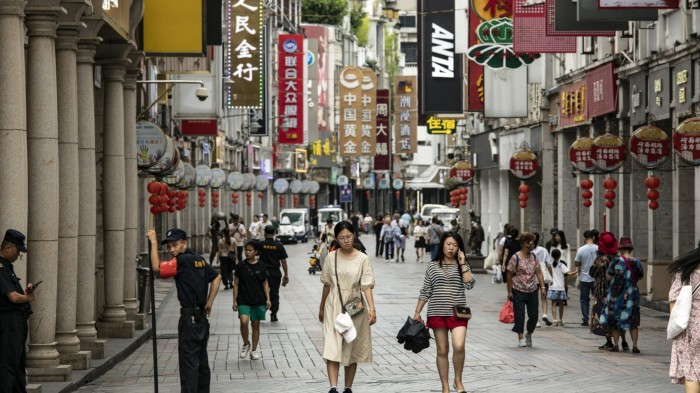China’s ‘whack-a-mole’ economic playbook leads to confusion

Roula Khalaf, Editor of the FT, selects her favourite stories in this weekly newsletter.
The writer is a senior fellow at Yale Law School and author of ‘Accidental Conflict: America, China, and the Clash of False Narratives’
Will the real Chinese economy please stand up? As China struggles to regain growth momentum, there is great confusion over the diagnosis of the problem. This matters a great deal as Chinese authorities are now rolling out a raft of efforts to jump start the world’s second-largest economy. Yet without the correct diagnosis, hopes of a cure may be dashed.
Some focus on China’s debt-intensive structural imbalances. There are those, including myself, who see the Japanisation parallels of a balance-sheet recession, with depressed asset values overwhelmed by excess liabilities. Others take a political economy perspective, seeing China facing the classic impasse of autocracy. While each of these explanations rings partly true, the match is hardly perfect. The modern Chinese economy is a blended system — one that reflects bits of all these depictions.
The blend has changed considerably over time. From Mao Zedong’s fascination with Soviet-style central planning to Deng Xiaoping’s market-based reforms, China’s economic dynamism has been shaped by profound transitions between these two extremes. Under Xi Jinping, the pendulum has swung back towards Mao’s approach. The reversal is far from complete. Xi’s dictum, as expressed in his initial reform proposals of 2013, sought a mix of both — for the markets to play a “decisive” role but for state ownership to remain “unswervingly” strong.
The blend is the problem. Depending on the metric, the state still controls at least 30-40 per cent of the economy. That complicates the diagnosis of what ails the Chinese economy. The blend also poses a formidable challenge to policy design — choosing the right strategy is like taking a chance on a single number in a game of roulette.
It follows that caution is needed in assessing the potential payback of China’s recent policy stimuli. The People’s Bank of China has started to cut interest rates by a small amount. Yet it’s hard to believe that this will achieve much traction in a floundering Chinese economy already overly reliant on interest-rate-sensitive investment in manufacturing capacity, infrastructure and construction. Meanwhile, the China Securities Regulatory Commission has signalled intent to boost investor confidence by extending trading hours, reducing transactions fees, encouraging stock buybacks and potentially cutting “stamp duties” on securities transactions. But this hardly offsets weak economic and earnings prospects in the worst performing major stock market this year.
At the same time, China’s State Council is grappling with the latest problem in its property sector — liquidity pressures on Country Garden, the nation’s largest private homebuilder, and Evergrande’s US bankruptcy filing after its dollar-denominated debt default in 2021. Pan Gongsheng, China’s new central bank governor, has indicated that the PBoC would provide support for “reasonable financing demands” of developers. Yet this smacks of Japanese-like “evergreen lending”, which perpetuated state-directed support to banks and overly levered corporates, prolonging the first of Japan’s lost decades.
In short, Chinese policymakers are flailing at different ingredients of their blended problem. This raises inconsistency risks — a “remedy” that may seem to address one aspect of the challenge but in doing so exacerbates another. If, for example, the State Council succeeds in protecting insolvent property developers, the resulting moral hazard encourages increased leverage elsewhere. Similarly, the CSRC’s attempts to manage the Chinese stock market may boost share prices above the intrinsic valuation of a low-growth economy, which could be a recipe for another asset bubble. And does a Chinese economy with a large overhang of excess investment really need a new round of monetary stimulus?
This is what happens when a blended system is in trouble. By opting for a combination of market-based and state-directed “solutions”, Chinese policymakers are unwittingly engaging in “whack-a-mole” — an approach that creates more problems than it solves. This borrows from a timeworn countercyclical playbook that was effective when China was less developed, less leveraged, less prone to asset bubbles and less susceptible to zombie borrowers. That playbook looks increasingly challenged. With China now facing the stiff headwinds of a shrinking population and sagging productivity, it might see little option but to continue using it. Yet in the end, that might be the ultimate pitfall for China’s weak blended economy.
Comments